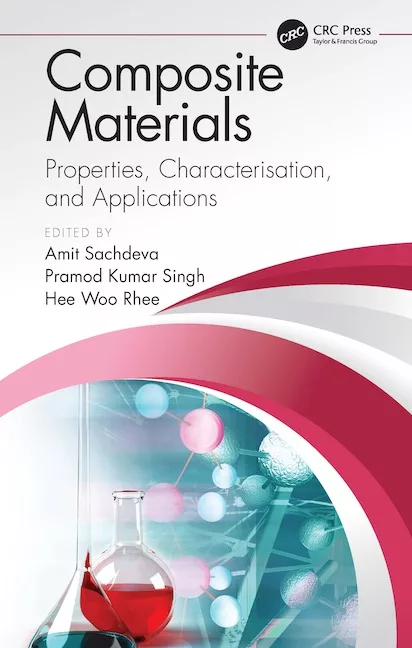Viewpoint - February 2007
For many fledgling companies with new and promising nanotechnology, their future may depend on partnering. The past year saw an incredible number of nanotech breakthroughs with applications in biotech, electronics, computing, the medical field and so on. Some of the new technology becomes applicable to coatings, and over the past years we have run several features on nanotechnology.
One small example that will have a global impact is the development by Rice University of rust-like mineral magnetite nanoparticles with unique magnetic properties to bind arsenic in contaminated drinking water. Worldwide, arsenic in contaminated wells affects millions, and a simple, hand-held magnet leaves drinking water meeting EPA standards.
A number of nanotechnology companies and academic institutions have signed contracts with the multinationals such as BASF and Rohm & Haas. The UK’s Malvern Instruments is also partnering to develop advanced systems that can analyze these particles. And of course new partnerships allow for more growth. Perhaps we are replacing commodity manufacturing in the United States with a new R&D growth area.
Aside from the enormous amount of government monies being poured into this arena, corporate America is investing billions in nanotechnology R&D. But in order to make it in today’s competitive world, and have the patent protections necessary, companies will need to partner or be acquired.
A good example is Nanophase, which has partnered with BASF for producing nanophased zinc oxide materials that can be used as UV sunscreens, antimicrobial agents, for abrasion-resistant applications and in wood coatings. BASF also has a partnership with a Singapore company to collaborate on various technologies for making catalysts, polymers and pigments. Nanophase is also an exclusive supplier to R&H for slurries used in the semiconductor business.
Nanogate, a German company, is partnered with Air Products. Nanogate develops specific solutions using new materials, programs surfaces or develops key materials for high-tech products. In the context of anti-stick coatings, scratch-proof systems, corrosion protection, powders and dispersions, the company concentrates on inorganic-organic nano-composites and self-organizing nano-structures based on chemical nanotechnology.
These types of arrangements allow for win-win situations. The smaller nanotech innovators don’t have the market clout to go it alone, and the larger companies gain a quick edge in R&D. I would expect this year we will witness a vast number of tiny nano firms inking deals with the multinationals. Every one of them has an interest in and knows their future growth is tied into nanotech. A recent survey showed that virtually all the big multinationals have external partnerships with start-up firms in this area or with academia. It is really a good example of creating a competitive advantage. The days of ‘publish or perish’ have become ‘partner or perish’!
One small example that will have a global impact is the development by Rice University of rust-like mineral magnetite nanoparticles with unique magnetic properties to bind arsenic in contaminated drinking water. Worldwide, arsenic in contaminated wells affects millions, and a simple, hand-held magnet leaves drinking water meeting EPA standards.
A number of nanotechnology companies and academic institutions have signed contracts with the multinationals such as BASF and Rohm & Haas. The UK’s Malvern Instruments is also partnering to develop advanced systems that can analyze these particles. And of course new partnerships allow for more growth. Perhaps we are replacing commodity manufacturing in the United States with a new R&D growth area.
Aside from the enormous amount of government monies being poured into this arena, corporate America is investing billions in nanotechnology R&D. But in order to make it in today’s competitive world, and have the patent protections necessary, companies will need to partner or be acquired.
A good example is Nanophase, which has partnered with BASF for producing nanophased zinc oxide materials that can be used as UV sunscreens, antimicrobial agents, for abrasion-resistant applications and in wood coatings. BASF also has a partnership with a Singapore company to collaborate on various technologies for making catalysts, polymers and pigments. Nanophase is also an exclusive supplier to R&H for slurries used in the semiconductor business.
Nanogate, a German company, is partnered with Air Products. Nanogate develops specific solutions using new materials, programs surfaces or develops key materials for high-tech products. In the context of anti-stick coatings, scratch-proof systems, corrosion protection, powders and dispersions, the company concentrates on inorganic-organic nano-composites and self-organizing nano-structures based on chemical nanotechnology.
These types of arrangements allow for win-win situations. The smaller nanotech innovators don’t have the market clout to go it alone, and the larger companies gain a quick edge in R&D. I would expect this year we will witness a vast number of tiny nano firms inking deals with the multinationals. Every one of them has an interest in and knows their future growth is tied into nanotech. A recent survey showed that virtually all the big multinationals have external partnerships with start-up firms in this area or with academia. It is really a good example of creating a competitive advantage. The days of ‘publish or perish’ have become ‘partner or perish’!
Looking for a reprint of this article?
From high-res PDFs to custom plaques, order your copy today!





